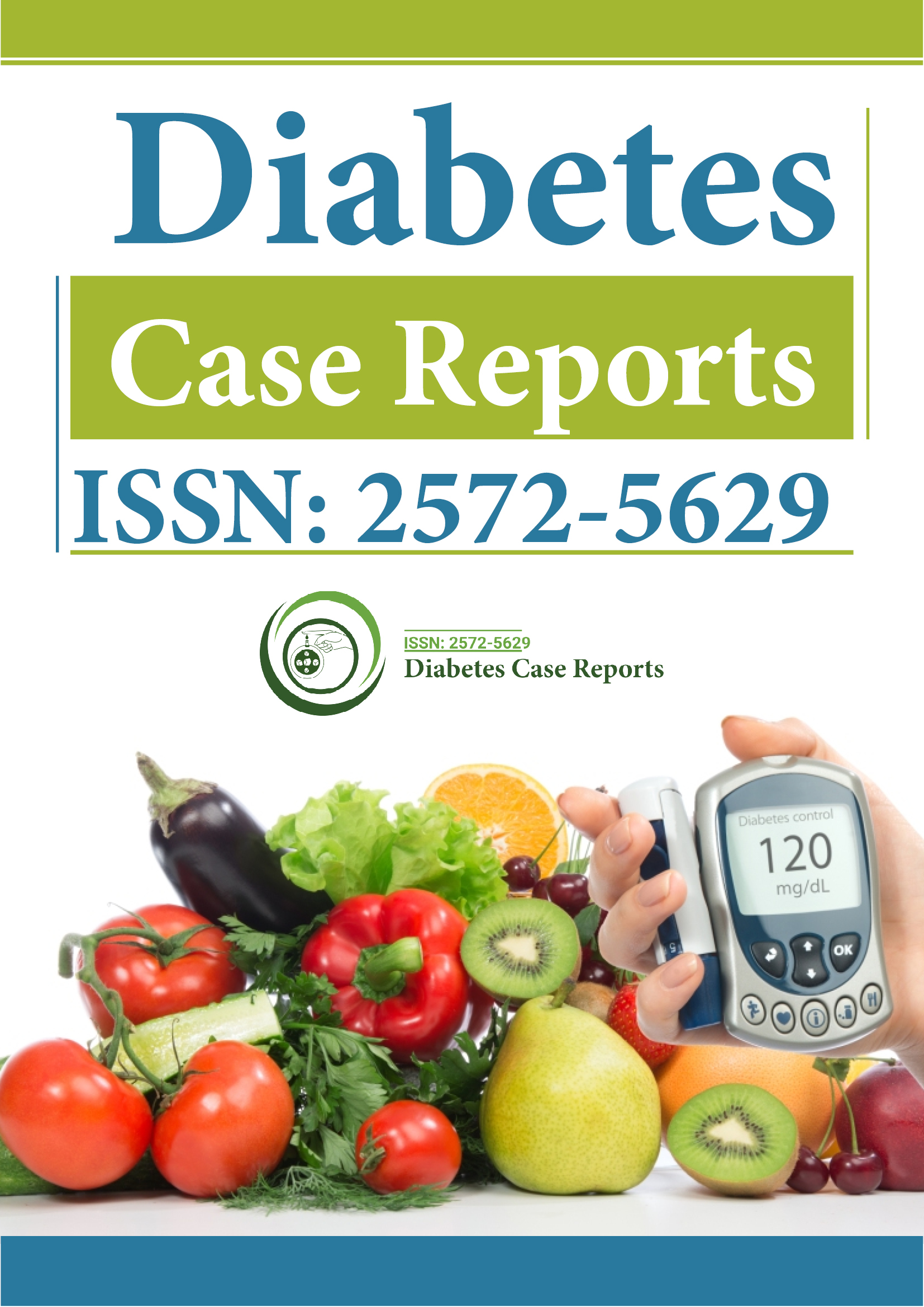Indexed In
- RefSeek
- Hamdard University
- EBSCO A-Z
- Euro Pub
- Google Scholar
Useful Links
Share This Page
Journal Flyer

Open Access Journals
- Agri and Aquaculture
- Biochemistry
- Bioinformatics & Systems Biology
- Business & Management
- Chemistry
- Clinical Sciences
- Engineering
- Food & Nutrition
- General Science
- Genetics & Molecular Biology
- Immunology & Microbiology
- Medical Sciences
- Neuroscience & Psychology
- Nursing & Health Care
- Pharmaceutical Sciences
Commentry - (2022) Volume 7, Issue 6
Clinical Features of Type 2 Diabetes in Alstrom Syndrome
Gary Bernal*Received: 17-Oct-2022, Manuscript No. DCRS-22-18963; Editor assigned: 20-Oct-2022, Pre QC No. DCRS-22-18963 (PQ); Reviewed: 09-Nov-2022, QC No. DCRS-22-18963; Revised: 18-Nov-2022, Manuscript No. DCRS-22-18963 (R); Published: 28-Nov-2022, DOI: 10.35841/2572-5629.22.7.133
Description
Alstrom's syndrome is a rare, complex genetic disorder associated with a wide variety of symptoms that affect multiple organ systems of the body. The disease is generally characterized by visual and hearing impairment, childhood obesity, insulin resistance, diabetes mellitus, heart disease (dilated cardiomyopathy), and slowly progressive renal dysfunction that can lead to renal failure. Additional symptoms such as pulmonary (lung), hepatic (liver), renal (kidney), and endocrine dysfunction may also occur. Some children may be delayed in reaching developmental stages, but intelligence is usually unaffected. Alstrom syndrome is caused by a disorder or defect (mutation) in the ALMS1 gene. The protein encoded by this gene is involved in cilia function, cell cycle control, and intracellular transport. Alstrom syndrome is inherited in an autosomal recessive manner.
Other clinical features in some patients include hypertension, hypothyroidism, hyperlipidemia, hypogonadism, urological abnormalities, adult short stature, and skeletal disorders. Most individuals exhibit normal intelligence, although some studies indicate psychomotor and intellectual developmental delays. People with Alstrom syndrome rarely live longer than 40 years. Although there is no specific treatment for Alstrom syndrome, early detection and treatment can slow the phenotypic progression of a disease and increase patient longevity and quality of life.
Sensory loss
Almost every children with Alstrom Syndrome experience impaired vision within the first year of life due to the retinal dystrophy that often appears a few weeks after birth. Nystagmus and acute photodysphoria, or light sensitivity, are the first signs. Early on, vision may be helped, especially if the child is given a prescription for dark, red-tinted spectacles. Cataracts are frequently discovered, and some people may momentarily profit from their treatment or removal.
Cardiac function
Dilated cardiomyopathy occurs in approximately two-thirds of Alstrom syndrome patients. The majority (>60%) of them develop Congestive Heart Failure (CHF) with sudden onset in the first few months of life. A life-threatening condition of CHF is one of the first symptoms noticed in an affected infant, even before nystagmus is observed. In many infants, cardiac function improves by age 3 years and remains stable with less normal function for many years.
Although it is possible to detect Alstrom's syndrome clinically in infancy, it is often discovered much later, as doctors tend to detect the symptoms as a separate problem. Currently, Alstrom syndrome is often diagnosed clinically because genetic testing is expensive and has limited availability. A physical examination is necessary to properly diagnose a patient. Certain physical characteristics can determine whether a patient has certain genetic disorders. A geneticist will usually do a physical exam by measuring the distance around the head, the distance between the eyes, and the length of the arms and legs . Various imaging studies, such as Computed Tomography (CT), show that Alstrom syndrome is characterized by a progressive and highly variable disease presentation spectrum. Diagnosis is based on observed clinical features and usually without genetic confirmation. As the child grows, the characteristic pattern of Alstrom's syndrome develops and the clinical picture becomes clearer. A diagnosis of Alstrom syndrome is established at any age if a patient has two confirmed ALMS1 mutations in her (each from one parent).
Conclusion
They continue to get better at making accurate diagnoses and selecting the right balance of therapeutic modalities for each patient as a result of the continual gathering and dissemination of knowledge concerning Alström Syndrome. Studies will undoubtedly uncover the mechanisms by which disease alleles of ALMS1 contribute to the numerous pathologies seen in Alstrom Syndrome in the years to come. Full understanding of the phenotypic traits will help us better understand the pathophysiology of ALMS1, especially with the aid of the existing mouse models. This may put those in a better position to prevent and treat some of the debilitating aspects of Alstrom Syndrome by generating targeted therapies that will address the problems presented by this complex condition.
Citation: Bernal G (2022) Clinical Features of Type 2 Diabetes in Alstrom Syndrome. Diabetes Case Rep. 7:133.
Copyright: © 2022 Bernal G. This is an open-access article distributed under the terms of the Creative Commons Attribution License, which permits unrestricted use, distribution, and reproduction in any medium, provided the original author and source are credited.
